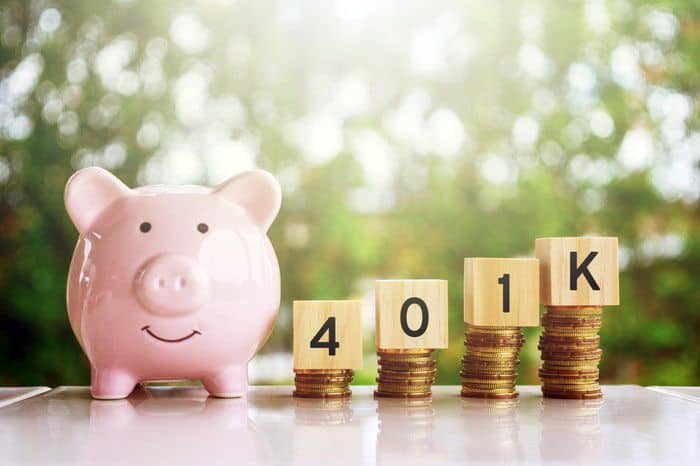Roughly 58% of Americans say the coronavirus pandemic is having a negative effect on their retirement savings, while 72% say the crisis has made them rethink their retirement savings strategy, according to a recent survey by Allianz Life. These statistics show real concern among Americans about protecting their nest eggs in this period of market volatility and uncertainty.
As most Americans rely on their 401(k) or similar employer-sponsored plan for retirement, it is critical to maximize and protect this investment. Here are some strategies to help you do that.
1. Act your age, not your shoe size
How you decide to diversify your portfolio depends on a few different factors, including your age and risk tolerance. Younger investors may want a more aggressive asset allocation, while those closer to retirement may want to be more conservative. A general rule of thumb for asset allocation is your stock allocation should be your age minus 100. So, if you’re 25, you should have 75% stock funds and 25% in bond or money market funds. If you’re 50, it should be split 50/50. This is a general guideline, as some people may work longer and want to be slightly more aggressive in their 50s.
The general idea is to reduce risk with a diversified mix of asset classes. But you should also diversify within asset classes with a mix of growth, value, index, large-cap, mid-cap, and small-cap funds. Each fund type reacts differently in various market environments, thus reducing risk and maximizing long-term returns. Now if that all sounds confusing, you can achieve those results by investing in target funds. Most 401(k) plans have target-date and target-risk funds. Target-date funds shift their asset allocation to become more conservative as you get closer to retirement, so if you plan to retire in 2040, a 2040 target-date fund will become lower risk the closer you get. Target-risk funds mix stocks, bonds, and other investments based on you risk profile. You can get a conservative, moderate, or aggressive fund based on your preferences.
2. Match game
The best feature of the 401(k) is the employer match. Not all companies offer it, but most do. Typically, a company will match your investments up to 6% of the employer’s salary. Some companies offer a 100% match, while others will do a 50% match or less. Whatever the match, take full advantage of it. So if you make $50,000 a year and the company offers a match up to 6%, then invest at least 6% — or $3,000 per year — because your employer will match all or a portion of that $3,000. Over time, you should work toward contributing the maximum allowed by the IRS, which is currently $19,500 per year.
Also note that most companies require you to work a certain number of years to be fully vested, which means you get the full amount of the employer match. The vesting schedule is usually on a sliding scale, with the employee getting a percentage of the match over a certain number of years up until the date they are fully vested. So be mindful of this before changing jobs, because if you leave before you are fully vested, your 401(k) will take a hit.
3. Flag on the play
You can take withdrawals from your 401(k) plan without penalty beginning at age 59 1/2. If you do so earlier than that, you will not only incur a 10% penalty, you are also missing out on the benefits of compound interest and investment performance. In this current environment of historically high unemployment, many people are struggling financially and have been forced to retire early. If that is the case, know that the Coronavirus Aid, Relief, and Economic Security Act (CARES Act) has relaxed some of the rules on borrowing from your 401(k), but you still must pay it back to avoid a penalty. If possible, try to hold off until age 59 1/2 by downsizing, cutting expenses, or finding another job — even if it is part-time or as a contract worker.
Also, check the fees on your 401(k) because funds with higher fees can really take a bite out of your savings. Fees or expense ratios typically range from 0.25% to 1.5%, which doesn’t sound like much, but if your $100,000 401(k) generates a 7% return for the year, you could pay around $1,000 more in fees per year depending on the expense ratios. Now compound that over 20 or 30 years, and it really adds up over time. Of course, some funds with higher fees generate higher returns, so it could be a trade-off, but the point is to be mindful of not paying high fees for under performing investments.

